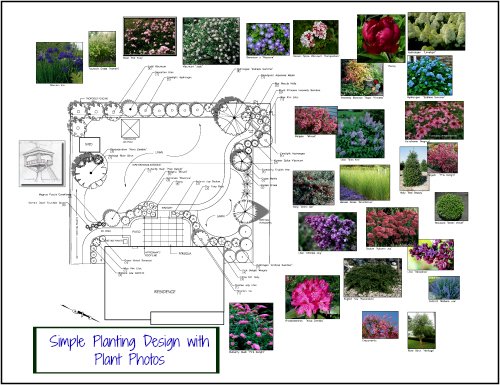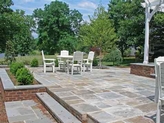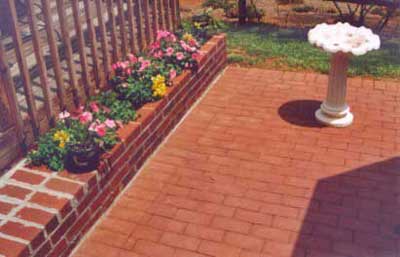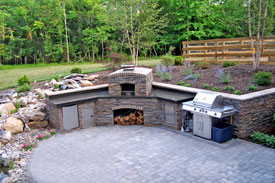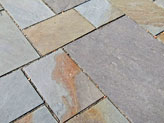Outdoor Pergola
Design, Placement and Tips
An outdoor pergola is often noted by its beautiful columns. This type of outdoor structure is commonly rectangular, but it can also be square or even round in shape. They can be semi-circular, following the curvilinear line of paving too.
Garden pergolas can
be incorporated into a patio, pool decking, or any other area that
would be a nice sitting area or be a great focal point.
Pergola Sizes as a Guide
- A pergola might be ten feet deep by twenty five feet long, as an
example.
- Ten feet will accommodate lounge chairs, while the length will depend on the space available and how much seating you would like.
- If
the garden pergola design is square, it might be fifteen feet by
fifteen feet. A dining table will fit nicely within these dimensions.
See photo below.
15'x15' outdoor pergola design used on a bluestone patio.
This pergola was featured on the Nate Berkus show in 2011!
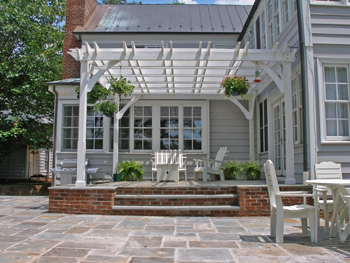
Here are a few more photos of this pergola and patio design.
Yet pergolas do not have to be used for seating. They can serve as a structure to walk under and through.
A garden pergola can be free standing or it can be attached to another structure, such as the house or pool house.
Pergolas are often covered by beautiful arbor vines which climb up the columns. One of the purposes of a pergola is to provide shade. However, it can also be a decorative architectural structure with more open lattice work on the top.
There are many different types of vines that can be used with an outdoor pergola. You just have to make sure that the vine will grow long enough so that it reaches and covers the top.
Some vines that can be used are Roses, Wisteria, and Akebia.
When using Wisteria, be aware that it is a very strong vine and can play havoc with the structure.
Only use Wisteria on a pergola that is extremely secure. Akebia has the advantageous of being evergreen in warm climates, although it may not be as showy as other flowering vines.
I encourage you to take a look at the book Patio Plans For Inspiration. It is filled with my patio designs, including pergolas. Some of the drawings are in 3D which many people find a great help.
Pergola Design
As mentioned above, the columns are an important part of the design. Although they should be in scale to the pergola itself and the rest of your landscape, larger pergola columns create a more stately and important appearance.
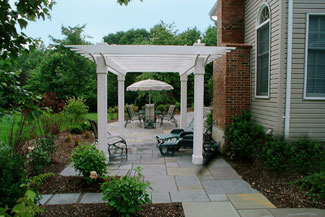
See more photos of this project!
Consider column sizes of twelve to eighteen inch in diameter. Prominent detailing at the top and bottom of the columns is also a very nice feature.
Another part of the garden pergola design is the lattice work on top. This can be very simple, but it can also be intricate. Denser lattice work will create more shade. Vines on top will help with shade also. You might also consider adding corner detailing. However, more detailing adds on to the cost of the pergola.
An outdoor pergola is typically made of wood. It can be left the natural color of the wood and age over time, or it can be painted. Cedar wood ages nicely. I would say that most painted pergolas that you see are white, but there is no reason that you can't select a different color. For example, consider a soft, dark green which blends in with the environment.
Something else that can be done is to build stone or brick columns and have the columns rest on these. This is a great look although it adds quite a bit onto the cost.
How Much Does a Pergola Cost?
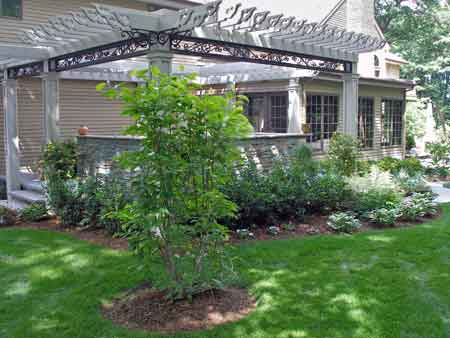
Take a look at additional pergola pictures of this design!
Many things go into the cost of a Pergola, such as which part of the country you are in, the expertise of the contractor, wood selection, detailing and design.
However, to give you a very rough estimate, a pergola with nice columns, fifteen feet square, should cost in the neighborhood of $8000 to $10,000. Simplifying the design will most likely cut down on this figure.
This is for a custom built pergola. You can also buy ready made ones that are much less!
Pergola Placement in the Landscape
You might use an outdoor pergola on your patio. This creates the aura of an outdoor room. If attached to the house (or close to it), the pergola structure becomes an architectural extension of the residence, which can be very nice.
Beautiful outdoor pergola set in an open lawn area.
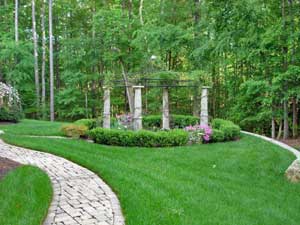
A pergola can be attached to the house or out in another area. If placing against the house, consider your roofline and also the height and placement of your windows. Sometimes the exact placement you want may not work well with the architecture of your house. However, with some creativity, things can usually be worked out.
For example, the pergola shown in the photo second from the top had to be located away from the house by a foot or two, but it turned out great.
Also consider if the room in the vicinity of where the pergola might be attached will block out the sun...or if this is a welcomed feature!
You will probably use your patio more if it is
hot and sunny, since the pergola will create a shady, comfortable space
to dine or relax.
- Another nice area for an outdoor pergola is at
the pool area.
- It is nice to
have any area to escape to.
- It might be placed at the side or at the end
of the pool, creating a beautiful focal point.
- It can be used by itself, or can be attached to a pool cabana.
Just be sure to leave a comfortable amount of paving between the pergola and the pool itself for access.
When placing, think about the view to the pergola and also the view you will be seeing from the structure too.
Ebook
Patio Plans For Inspiration
Click here to see actual patio plans that I did for some of my clients, including pergolas.
Both 3D and plan view designs are shown so that you can use them or get ideas for your own project.
Explanations are also provided.
Also see:
Patio Video and Outdoor Pergola Design
Learn about the variety of wood types that can be used for a pergola.
If you enjoyed this page, please share it!


